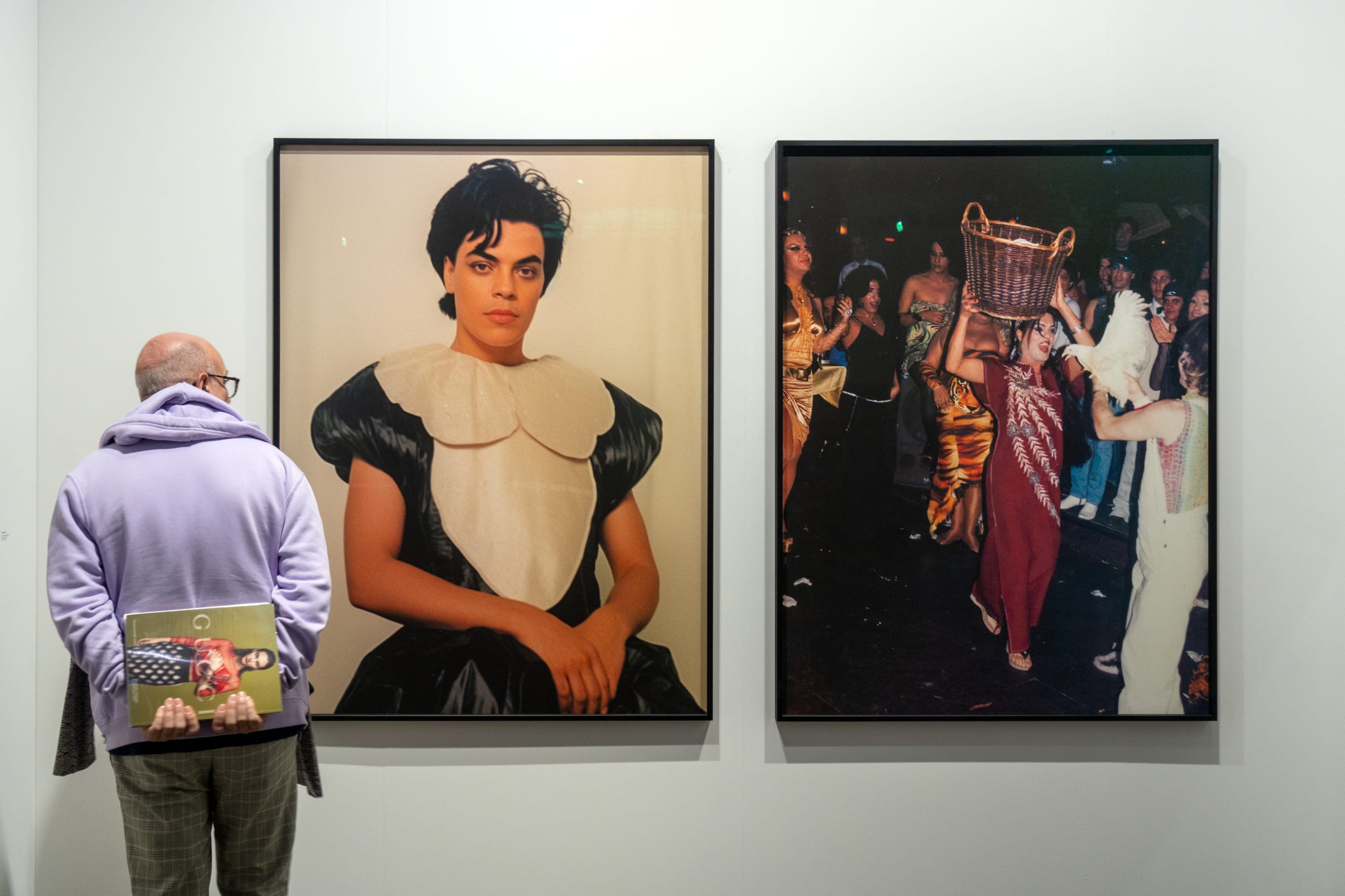
How politics, new tax and anti-money laundering regimes, and AI copyright will affect the art trade in 2024
At the start of 2023, there was considerable optimism that the year ahead was going to be one of stabilization, following a challenging period with the fallout from COVID-related lockdowns, the reduction of frictionless trade through Brexit, and general de-globalization, as well as high inflation and volatility in global energy markets due to Russia’s invasion of Ukraine. Did last year chart a safe passage from choppy into somewhat calmer waters?
The answer is almost certainly ‘no’. At the beginning of 2024, the global economy and art trade are facing yet more uncertainty through ongoing political instability, military conflict, and a sense of ‘permacrisis’.
The geopolitical macroclimate and the regulatory particularities affecting the art trade in different jurisdictions are likely to remain challenging and uncertain. This is despite calls for sensible regulatory measures to govern the global art market, and what appears to be competition for the best ‘cultural statecraft’ by governments and legislators to benefit the sector. Some of the key regulatory changes impacting the market in 2024 are discussed below.

Taxation and Import VAT
In 2024, general elections will take place in the US, India, and the UK, and there will be EU-wide elections for the European Parliament. In election years, taxation is usually at the top of the political agenda. Often, tax considerations affecting the art market are formulated with zero-sum calculations in mind. One country’s gain by way of an advantageous tax regime will result in another country’s loss.
EU Directive 2022/542 aims to create closer alignment of Member States’ VAT regimes. Previously, it was only possible for Member States to apply a reduced VAT rate on imported works of art, collectors’ items, and antiques, and works sold by artists themselves. Following the implementation of the directive, these objects can benefit from reduced VAT rates at the point of sale in their local primary and secondary markets and when purchased by museums. EU Member States first must each transpose the amendments and apply the new measures by January 1, 2025.
However, the directive does not allow for the cumulative application of the reduced VAT rate on artwork imports in conjunction with the application of the margin scheme when selling the artwork. In other words, pursuant to the provisions, it will not be possible for a dealer first to benefit from the reduced VAT rate upon importation into the EU and then, upon onward sale, benefit from being taxed on the margin between purchase price and onward-sale price only.
Implementing the directive, France could have chosen to maintain the 20% rate on profit margins for secondary sales, but would have had to extend that rate to imports and primary sales of art. To the relief of many French art market participants, French lawmakers opted instead to legislate not only to continue to offer a reduced rate at 5.5% for imported artworks, but also to extend the reduced rate to the vast majority of VAT-able transactions of artworks in France which are set to be taxed at 5.5% from 2025 onwards. This amendment may be seen as an attempt to consolidate France’s position as the continent’s leading international art market further.

The French regulatory attempt to boost its national art market appears to have inspired other Member States to consider their respective regimes with a view to remaining or becoming more competitive themselves. Notably, there have been discussions about legislative initiatives aimed at boosting the comparative tax position in other Member States, including in Belgium and Italy.
On the other side of the English Channel, a number of trade associations have been lobbying the government to reduce import VAT for art and antiques from the current reduced rate at 5% to zero and to explore options to simplify and improve the Temporary Admissions regime to help reduce the administrative burden placed on the UK art market. With general elections on the horizon in the UK, the Labour Party has stated it will not introduce a wealth tax, nor increase Capital Gains Tax. A less explicit alternative to raising headline rates for the next UK government (be it Labour or Tory) might be to make changes to available exemptions or reliefs. There has been speculation that the current UK government may cut Inheritance Tax (IHT) ahead of the elections. Among the proposals under consideration is a reduction of the 40% rate, paving the way to abolish the tax altogether in future years. In press interviews in January 2024, the Labour leadership stated a Labour government would reverse any such change to IHT.
The US Presidential elections are set to take place on November 5. Depending on the outcome, there may be significant consequences not only for the applicable tax and trade policy relevant to art and culture. Effective in October 2019, the Trump administration famously imposed tariffs on UK or German lithographs on paper or paperboard, and pictures, designs, and photographs that were printed within the past 20 years. In 2023, the Biden administration took the US to rejoin UNESCO, after the country had withdrawn under President Trump.

Sanctions Regimes Remain Aligned – For Now
The result of the US elections will likely also have a significant effect on US foreign policy decisions. Restrictive measures have already had a substantial effect on the international art trade. As at January 2024, the US Office of Foreign Assets Control has had measures in place in relation to Afghanistan, the Balkans, Belarus, Burma, Central African Republic, Cuba, Democratic Republic of Congo, Ethiopia, Hong Kong, Iran, Iraq, Lebanon, Libya, Mali, Nicaragua, North Korea, Russia, Ukraine, Somalia, South Sudan, Sudan and Darfur, Syria, Venezuela, West Bank, Yemen, and Zimbabwe.
Such measures have, for example, included the blacklisting of certain individuals and companies, or imposing an outright ban on dealing in cultural goods, precious metals, luxury objects, and artworks in relation to persons in certain jurisdictions. So far, US, EU, and UK sanctions regimes have largely targeted many of the same countries and territories with restrictive measures. It is not inconceivable that a Republican victory in the US Presidential elections could lead to more divergence of what has been a largely harmonized approach on both sides of the Atlantic.
Conversely, there are geopolitical regions which have generally diverged from the ‘Western approach’ by not imposing sanctions against states perceived to have been or become hostile towards the West. In relation to the Russia sanctions program, some such regions appear to have subsumed the art trade flows that previously existed between Russia and the West and which has become impossible due to the trade sanctions imposed by the west on Russia and vice versa. Notably, some of this trade now flows to the Middle East and parts of Asia and Africa.

More Divergence in AML Rules?
There has also tended to be some convergence between the US, the UK, and the EU in relation to important aspects of their respective anti-money laundering (AML) regimes and their impact on the art trade (though less so than in relation to economic sanctions). Changes in government could also potentially bring divergence to these regimes. The US AML regime has focused on the antiquities trade rather than the ‘high-value art market’. In February 2022, the US Treasury considered whether to expand the application of its AML rules to the art market more generally. However, the Treasury’s study concluded: ‘As such, it is recommended that Treasury complete its ongoing work to close outstanding gaps […] before potentially turning its attention to the high-value art market’.
Conversely, in the UK, the trade in antiquities, coins, and ethnographic materials does not currently fall within the scope of the relevant AML regime. The art trade in general, however, does.
The current AML rules in the UK and the 27 remaining EU Member States are all based on the implementation of the (EU) 5th AML Directive, which means that each of the implementing countries were required to legislate individually to give effect to the directive’s aims. By default, this has caused some divergence from the outset.
On December 13, 2023, the EU provisionally agreed on a new regulation and another directive to further refine EU AML measures across the trade bloc. While the new regulation will result in more harmonization among Member States, both instruments may lead to further divergence from the rules in the US and UK, respectively. The EU proposals include the extension of the definition of ‘obliged entity’ to include crypto asset service providers and third-party financing intermediaries, and traders of luxury goods including precious metals, precious stones, jewelers, horologists, goldsmiths, traders of luxury cars, airplanes, and yachts as well as cultural goods.

The regulation will also limit the use of cash payments for art transactions to a maximum
of €10,000 and Member States are allowed to set an even lower ceiling. Prior to the 5th AML Directive, art market participants were considered ‘regulated’ under the Directive if their aggregate annual transactions amounted to more than €10,000 in cash, and since the AML Directive, more than €10,000 in any form. Affected businesses will be required to comply with identity verification obligations on any person who carries out an ‘occasional transaction’, in simple terms, a single transaction, or series of transactions, outside of a business relationship in cash above €3,000.
In January 2024, the UK National Crime Agency issued an amber alert highlighting sanctions evasion and money laundering risks faced by the UK art storage sector because of the
risk ‘that criminals are finding ways to utilize the art market to conduct illicit activity’.
The UK authority intended to flag factors considered to be indicative of financial sanction evasion, money laundering, or cultural property trafficking. These include changes in client circumstances, attempts to transfer artworks to a family member or close contact, or to sell artwork or cultural property quickly, and move it to another jurisdiction. The alert refers to any facility or space that is used to hold, store, or move artworks, antiquities and/or collectibles, be it for the short term or for a prolonged period of time, including not only freeports, but also auction houses, art dealerships, galleries, and museums.

Art and AI – Harmonization or Convergence?
Another key issue in 2023 is the need for a regulatory framework to deal with AI, specifically in relation to text and data mining for training AI algorithms. Clearly this will affect the art market in a number of ways, including in relation to the creative process, the protection of intellectual property rights, and the marketing and sales process within the art market.
In March 2023, a UK White Paper proposed a regulatory regime that will use ‘a principles-based framework for regulators to interpret and apply to AI within their remits’. It will be guided by seven ‘essential characteristics’ identified by the UK government: pro-innovation, proportionate, trustworthy, adaptable, clear, and collaborative. This light-touch approach is supposed to ensure the UK will become a ‘global AI superpower’.
In June 2023, the European Parliament approved a draft version of its AI Act, a legislative milestone to regulate AI in the trade bloc. In stark contrast with the UK White Paper, the EU law would require AI developers to publish summaries of copyrighted material used to train their respective algorithms, enact a near-total ban on the use of AI in facial-recognition systems, and mandate conducting risk assessments before technology is put into everyday use.

In the US, the blueprint for an AI Bill of Rights, published in October 2022, could lead to a principles-based approach more closely aligned with the UK’s position. However, a joint US-EU initiative to draft a set of voluntary rules for businesses, called the ‘AI Code of Conduct’ aims to build international consensus for AI governance.
Potentially differing regulations could create a regulatory (and technological) gulf between the US, UK, and EU and their respective art sectors. It is noteworthy that Germany, France, and Italy have put forward a counter-proposal to the EU proposed AI Act to promote ‘mandatory self-regulation through codes of conduct’.
Each jurisdiction appears to be calculating how best to balance the protection of artists’ and copyright owners’ rights with the huge economic potential governments see in harnessing AI. For example, AI may be used for highly specialized services including authentication, conservation, and restoration, as well as fundamental functions needed to market and sell art. In relation to intellectual property, there will continue to be case law on whether AI-generated art is capable of replicating the creative process copyright law seeks to protect, and if so, how.

Art-Backed Loans on the Rise beyond the US?
Finally, as noted in the report, there is significant use of credit and lending by collectors in the art market. The use of art as collateral for loans generally is not straightforward: the portable nature of art as an asset class, combined with difficulties in establishing title, provenance, authenticity and of course, value, all create complexity and introduce risk for any lender who provides loan facilities backed by the borrower’s art collection.
Some lenders have been skeptical of the guarantee return on their loans because of fluctuations in valuations and the uncertain performance of the art market. Depending on jurisdiction, there may not be a central registry to record security over artworks and certain other chattels. For example, it is generally easier to check security interests over assets held by companies, rather than individual collectors. In relation to individuals in particular, this can potentially lead to difficulties in identifying third-party interests, which might deter a potential lender who would want their interest in the art to be clearly identifiable.
Art lending has tended to be much more prevalent in the US than elsewhere because of the Uniform Commercial Code (UCC), which records liens against assets, thus giving reassurance to lenders that the work of art is not already being used as collateral elsewhere. Bank of America for example stated in March 2023 that there had been a steady growth of 10% a year in art-backed loans over the past decade or so. Apart from differences in lending culture, regulatory changes to antiquated systems of recording liens in Europe and the UK could give this segment of the art market a boost there.
This is particularly noteworthy given that the number of ultra-high-net-worth individuals’ wealth associated with art and collectibles is estimated to have increased sharply over the past couple of years.
Katalin Andreides is a Rome-based EU art lawyer who advises clients in a number of regions including Italy, France, Hungary, and Monaco. Till Vere-Hodge is a London-based solicitor at Payne Hicks Beach LLP, who advises clients on cross-jurisdictional matters pertaining to art and cultural property law. Published curtesy of Art Basel.



Leave a Reply